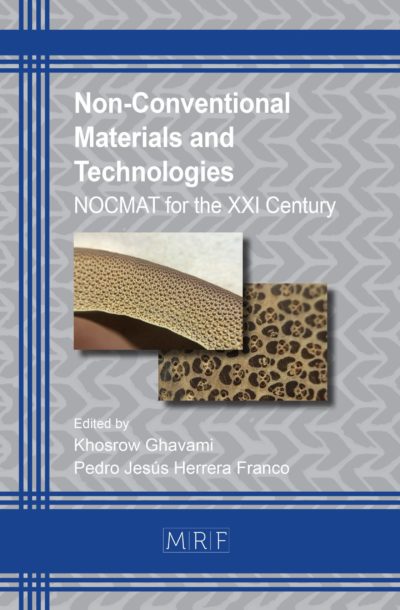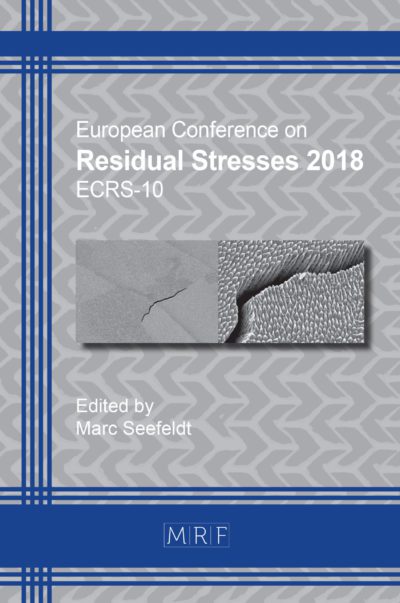Process-performance relationship of the CF/PA6 laminates
Sepehr Simaafrookteh, Canbek Giray, Stepan V. Lomov, Jan Ivens
Abstract. The processing condition of the semi-crystalline thermoplastic composites can affect their mechanical performance. This study investigated the mechanical behavior of CF/PA6 thermoplastic tape processed into laminates at different conditions. A temperature range starting from the melting point of PA6 at 220 ºC to 260 ºC is investigated, together with a holding time of 5 to 30 seconds and two cooling approaches: water-cooled plates and cold plates The influence of processing conditions varied depending on the specific mechanical property being evaluated. Longitudinal tensile strength and modulus were found to be relatively insensitive to processing conditions. A slight increase for the higher cooling rate was obtained with the highest average tensile strength of 1180.2 ± 117.6 MPa. Peel strength was highest for laminates processed at higher temperatures (240 °C and 260 °C) and with cold plates for cooling, reaching a maximum of 3.9 ± 0.1 N/mm. These findings highlight the importance of optimizing processing conditions to balance thermal exposure and mechanical performance.
Keywords
CF/PA6, Thermoplastic, Peel Strength, Cooling Rate, Mechanical Properties
Published online 5/7/2025, 10 pages
Copyright © 2025 by the author(s)
Published under license by Materials Research Forum LLC., Millersville PA, USA
Citation: Sepehr Simaafrookteh, Canbek Giray, Stepan V. Lomov, Jan Ivens, Process-performance relationship of the CF/PA6 laminates, Materials Research Proceedings, Vol. 54, pp 628-637, 2025
DOI: https://doi.org/10.21741/9781644903599-68
The article was published as article 68 of the book Material Forming
![]() Content from this work may be used under the terms of the Creative Commons Attribution 3.0 license. Any further distribution of this work must maintain attribution to the author(s) and the title of the work, journal citation and DOI.
Content from this work may be used under the terms of the Creative Commons Attribution 3.0 license. Any further distribution of this work must maintain attribution to the author(s) and the title of the work, journal citation and DOI.
References
[1] Ge J, Catalanotti G, Falzon BG, Higgins C, McClory C, Thiebot J-A, et al. Process characteristics, damage mechanisms and challenges in machining of fibre reinforced thermoplastic polymer (FRTP) composites: A review. Composites Part B: Engineering 2024;273:111247. https://doi.org/10.1016/j.compositesb.2024.111247
[2] Ravichandran B, Balasubramanian M. Joining methods for Fiber Reinforced Polymer (FRP) composites − A critical review. Composites Part A: Applied Science and Manufacturing 2024;186:108394. https://doi.org/10.1016/j.compositesa.2024.108394
[3] Boisse P, Akkerman R, Carlone P, Kärger L, Lomov SV, Sherwood JA. Advances in composite forming through 25 years of ESAFORM. Int J Mater Form 2022;15:39. https://doi.org/10.1007/s12289-022-01682-8
[4] Stokes-Griffin CM, Kollmannsberger A, Compston P, Drechsler K. The effect of processing temperature on wedge peel strength of CF/PA 6 laminates manufactured in a laser tape placement process. Composites Part A: Applied Science and Manufacturing 2019;121:84–91. https://doi.org/10.1016/j.compositesa.2019.02.011
[5] Taketa I, Kalinka G, Gorbatikh L, Lomov SV, Verpoest I. Influence of cooling rate on the properties of carbon fiber unidirectional composites with polypropylene, polyamide 6, and polyphenylene sulfide matrices. Advanced Composite Materials 2019;29:101–13. https://doi.org/10.1080/09243046.2019.1651083
[6] Shafaq, Donough MJ, Farnsworth AL, Phillips AW, St John NA, Gangadhara Prusty B. Influence of deposition rates on the mode I fracture toughness of in-situ consolidated thermoplastic composites. Composites Part B: Engineering 2023;251:110474. https://doi.org/10.1016/j.compositesb.2022.110474
[7] Shafaq S, Donough MJ, Oromiehie E, Islam F, Phillips AW, St John NA, et al. Parametric process optimisation of automated fibre placement (AFP) based AS4/APC-2 composites for mode I and mode II fracture toughness. Journal of Composite Materials 2024:00219983241283598. https://doi.org/10.1177/00219983241283598
[8] Kondo MY, Montagna LS, Morgado GFDM, Castilho ALGD, Batista LAPDS, Botelho EC, et al. Recent advances in the use of Polyamide-based materials for the automotive industry. Polímeros 2022;32:e2022023. https://doi.org/10.1590/0104-1428.20220042
[9] Oshima S, Higuchi R, Kato M, Minakuchi S, Yokozeki T, Aoki T. Cooling rate-dependent mechanical properties of polyphenylene sulfide (PPS) and carbon fiber reinforced PPS (CF/PPS). Composites Part A: Applied Science and Manufacturing 2023;164:107250. https://doi.org/10.1016/j.compositesa.2022.107250
[10] Simaafrookhteh S. Modeling and experimental characterization of consolidation behavior during the processing of thermoplastic composites (under preparation). PhD Dissertation. KU Leuven, 2025.
[11] Yassin K, Hojjati M. Processing of thermoplastic matrix composites through automated fiber placement and tape laying methods: A review. Journal of Thermoplastic Composite Materials 2018;31:1676–725. https://doi.org/10.1177/0892705717738305
[12] Schäfer PM. Consolidation of carbon fiber reinforced polyamide 6 tapes using laser-assisted tape placement. PhD dissertation. Technische Universität München, 2017.
[13] Lee I-G, Kim D-H, Jung K-H, Kim H-J, Kim H-S. Effect of the cooling rate on the mechanical properties of glass fiber reinforced thermoplastic composites. Composite Structures 2017;177:28–37. https://doi.org/10.1016/j.compstruct.2017.06.007
[14] Lee WI, Talbott MF, Springer GS, Berglund LA. Effects of cooling rate on the crystallinity and mechanical properties of thermoplastic composites. Journal of Reinforced Plastics and Composites 1987;6:2–12.
[15] Delavari K, Semnani D. Effects of Processing Variables on the Mechanical Behavior of Thermoplastic Polypropylene/Glass Composite Reinforced with Weft-knitted Fabric with Various Layups. Fibers Polym 2021;22:2006–17. https://doi.org/10.1007/s12221-021-0008-z
[16] Zhou J, Fuentes CA, Desplentere F, Ivens J. The Effect Of Cooling Rate On The Interlaminar Bond Strength Of Continuous Fiber Reinforced Thermoplastic Composites. Proceedings of the 21st European Conference on Composite Materials (ECCM21), vol. 5, Nantes, France: 2024.
[17] Hoecker F, Karger-Kocsis J. Effects of crystallinity and supermolecular formations on the interfacial shear strength and adhesion in GF/PP composites. Polymer Bulletin 1993;31:707–14. https://doi.org/10.1007/BF00300131
[18] Hoecker F, Karger-Kocsis J. Effects of matrix microstructure on the interfacial strength in GF/PP examined by a single fiber pull-out technique. Mech Compos Mater 1994;29:531–9. https://doi.org/10.1007/BF00616316
[19] Parlevliet PP, Bersee HEN, Beukers A. Residual stresses in thermoplastic composites – a study of the literature. Part III: Effects of thermal residual stresses. Composites Part A: Applied Science and Manufacturing 2007;38:1581–96. https://doi.org/10.1016/j.compositesa.2006.12.005
[20] Simaafrookhteh S, Van Thillo T, Lomov SV, Ivens J. Crystallinity of neat and carbon fiber-reinforced polyamide-6 processed at different cooling rates. Composites Part A: Applied Science and Manufacturing 2025;188:108520. https://doi.org/10.1016/j.compositesa.2024.108520














